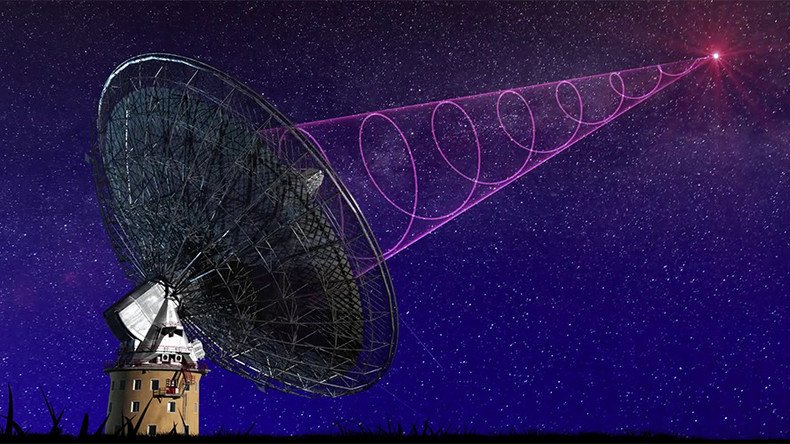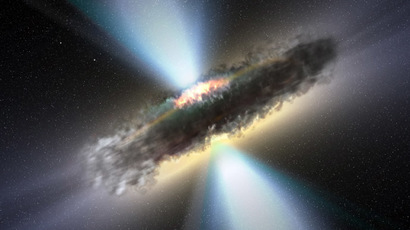'Alien signals' could be caused by collisions between asteroids, neutron stars – study

Peculiar 'alien signals' have been stumping astronomers since they were discovered almost a decade ago, but Chinese researchers believe they may have determined what causes the mysterious radio emissions.
Fast radio bursts (FRBs), which were first discovered in 2007, only last a few milliseconds and remain a mystery to astronomers.
Previous studies have speculated that the bizarre 'alien signals' could be the product of a supernova, two black holes colliding, a spinning neutron star, or related to hyperflares of magnetars.
However, believing those explanations unsatisfactory, Yong Feng Huang and Jin-Jung Geng of Nanjing University set out to study the phenomenon on their own, examining data from 10 FRBs and obtaining key parameters that could help solve the mystery. Their study was published online in the arXiv journal on Monday.
FRBs have generally been discovered through single-pulse search methods, by using archive data of wide-field pulsar surveys at the multi-beam 64-meter Parkes radio telescope in Australia and the 305-meter Arecibo telescope in Puerto Rico.
According to the authors, there are four main states of detecting FRBs.
"First, the radio telescopes are uniformly pointing toward the sky at the time of the detections. Second, for the multi-beam receiver system, usually the signal was recorded only in very few beams, typically less than four, especially by adjacent beams. Third, FRBs are characterized by large dispersion measure (DM) values, significantly larger than terrestrial sources of interference. Fourth, the observed behaviors of time delay and frequency evolution of FRBs strongly indicate that cold-plasma dispersion should have been engraved in the radio signal," they wrote in the paper.
Following their research, the two hypothesized that the radio emissions are caused by asteroid-neutron star collisions, which would explain their short duration and intensity, as well as their frequency.
“Our model can naturally explain the millisecond duration of FRBs. It can also well account for various other aspects of FRBs,” the scientists wrote.
The two authors believe that a very strong electromagnetic outburst, or 'afterglow,' should be triggered by the signals if they are caused by collisions.
However, there's just one problem – the FRBs can't be quickly followed up to catch their counterparts in other wavelengths, because they're typically screened out from archive data. This has thus far prevented astronomers from determining the mystery of exactly how FRBs form.
The two scientists hope that the future Chinese 500-meter Aperture Spherical Radio Telescope (FAST), scheduled to be put into use in late 2016, will contribute to the study of FRBs.
If the astronomers' hypothesis is correct, it wouldn't be the first time that scientists have studied the collisions of small bodies with neutron stars. Many have speculated that such collisions are behind X-ray and gamma-ray bursts.
The study comes just one month after five FRB signals from outside the Milky Way were detected by the Parkes radio telescope. So far, only 11 of the peculiar radio bursts have been recorded around the world.













